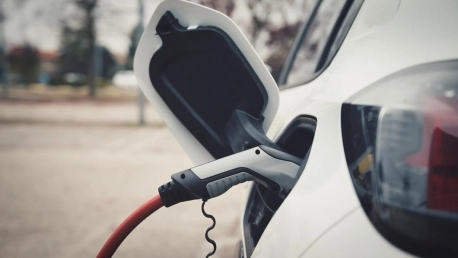The UK’s push for a more environmentally friendly future is intensifying with a major shift toward electric vehicles (EVs). This effort aligns with the Prime Minister’s net-zero emissions goal set for mid-century. A significant move propelling this change is the planned prohibition of new petrol and diesel car sales by 2035, with a robust £620 million funding package earmarked for EV incentives and related infrastructure development. This proactive stance signals the country’s commitment to combat climate change. However, this green revolution is not without concerns. As adoption grows, issues such as the environmental impact of EV production and battery disposal come to the fore. These challenges must be addressed to ensure that the shift to EVs does not compromise the environmental benefits it seeks to achieve.
The Dark Side of Green Technology: Lithium-Ion Battery Dangers
Amid the race to eco-consciousness, the lithium-ion batteries driving EVs have become a source of concern. Specialists in the field, like Graham Hawkins from Charles Taylor, have begun sounding alarms over the risks associated with these power cells. From minor mishaps to significant system malfunctions, the danger escalates to fires that can provoke a perilous thermal runaway – a series of reactions resulting in battery explosions. There’s an inherent irony in this: the very technologies devised to protect our environment could, inadvertently, pose new hazards that undermine those safety aims. The topic gains further complexity considering the frequency of EV usage. As EVs permeate the automotive market, the opportunities for battery-related failures naturally rise. This is not merely a hypothetical risk; real-world incidents have underscored the severe consequences of lithium battery fires, challenging emergency services and casting a shadow on EV safety narratives. Thus, understanding and mitigating the risks associated with green technologies becomes as crucial as their dissemination to maintain public trust and safety.
Addressing the Challenges of EV Charging Stations
While EVs herald an era of reduced carbon emissions, their charging stations present their own set of risks. Conduits for the massive electric currents required to replenish these vehicles, these stations must incorporate high-voltage, oil-cooled cables. The need to avoid cable damage – a potential source of ignitions – stands at the forefront of safety considerations, necessitating robust risk management systems. Urban planners face the added complexity of integrating these infrastructures into crowded cityscapes. The placement and maintenance of EV charging stations bear an enormous responsibility in precluding fire hazards. As these hubs of eco-transport multiply, the need for space and safety in their layout intensifies. The vision for widespread, accessible charging points, therefore, must be tempered with stringent precaution protocols to avert the specter of fires, ensuring the EV revolution does not come at the expense of urban safety.
Surging Incidents and the Fire Brigade’s Concerns
The practical repercussions of a green transition are not lost on the London Fire Brigade. They’ve flagged a striking surge in EV-related fire incidents—an 83% ascent signals the escalating stakes. With monthly statistics showing a 30% rise in accidental EV fires, the imperative becomes clear: bolster risk surveying and amplify management methodologies to curtail these incidents. Such data underline the urgency to adapt, innovate, and refine our response to these environmental challenges.A reactive stance to EV fires is unsustainable; proactivity is the order of the day. By analyzing the root causes of these fires, engineering safer battery technologies, and improving emergency services’ response mechanisms, we can foster a climate where environmental progress does not come hand-in-hand with escalated fire risks. Addressing the fire brigade’s qualms isn’t just a matter of due diligence—it’s an essential step in the stewardship of a sustainable yet safe urban landscape.
Bridging the Gap in Insurance and Risk Knowledge
A chasm exists in the understanding of EV-specific perils, most acutely felt among smaller insurance brokers. With the ascent of EVs, insurers find themselves navigating a precipitous learning curve to pioneer new risk assessment models apt for these advanced transport means. Not only is education within the industry critical, but standardization of knowledge and practices could pave the way for better handling of these emerging risks.Insurance companies are entrusted with the task of underwriting an unfamiliar landscape of risk, one that is constantly reshaped by technological advancements. Collaborative efforts to establish industry-wide benchmarks for EV risks and insurance models are vital. As the sector grapples with these evolving challenges, it becomes more crucial than ever to disseminate comprehensive risk-related information and cultivate a well-informed community of insurers.
The Necessity for Collaborative Action
Tackling the new risk terrains introduced by green technologies is not a solo mission—it calls for collective endeavor. It takes the concerted efforts of the insurance value chain, tech mavens, and government bodies to navigate these new perils adeptly. This means not just governing and mitigating risks but also ensuring that the pursuit of environmental conscientiousness does not come at the cost of communal welfare and safety.In essence, the united front needs to balance the equation of sustainability with security. The confluence of expertise from various sectors can elevate risk management from reactive firefighting to proactive risk mitigation, thereby reinforcing the foundation of green initiatives. Our charge is to guarantee that the measures taken to protect our planet are equally robust in protecting its inhabitants.









